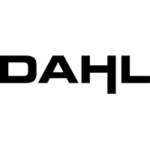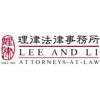-
What are your countries legal definitions of “artificial intelligence”?
Currently, there is no specialized definition of “artificial intelligence” in the laws and regulations within Mainland China. Only some recommended national standards and guidelines provide their own interpretation, such as “the research and development of the mechanisms and applications related to artificial intelligence systems1” and “the use of computers or devices controlled by them to simulate, extend, or expand human intelligence through environmental perception, knowledge acquisition, and deductive reasoning.”2
Furthermore, a subset of AI, “generative AI technologies,” has been defined in the Interim Measures for the Management of Generative Artificial Intelligence Services as “models and related technologies capable of generating text, images, sounds, videos, and other content.”
Footnote(s):
1 “Information Technology – Artificial Intelligence – Terminology(《信息技术 人工智能 术语》)”(GB/T 41867-2022)Section 3.1.2.
2 Cybersecurity Standard Practice Guideline – Guidelines for the Prevention of AI Ethical Security Risks (《网络安全标准实践指南——人工智能伦理安全风险防范指引》), Section 2.1.
-
Has your country developed a national strategy for artificial intelligence? If so, has there been any progress in its implementation? Are there plans for updates or revisions?
Yes, China’s ambitions in Artificial Intelligence are outlined in the comprehensive “New Generation Artificial Intelligence Development Plan” (Development Plan), issued by the State Council of the PRC in 2017.
- This roadmap details a three-step strategy for propelling China to the forefront of AI innovation, with milestones in 2020 for solidifying China’s status as an innovative nation, by 2025 for leading-edge breakthroughs, and by 2030 for achieving top-tier innovation and integration in economic and social spheres3.
- Moreover, the Development Plan specifies the key tasks to achieve the aforementioned milestones, including but not limited to (a) building open and coordinated AI science and technology innovation systems; (b) fostering a high-end, highly efficient smart economy; (c) constructing a safe and convenient intelligent society; (d) strengthening military-civilian integration in the AI domain; (e) building a safe and efficient intelligent infrastructure system; and, (f) planning major scientific and technological projects for the new generation of AI4.
Footnote(s):
3 2020 Milestone: The overall technology and application of AI are expected to reach a level comparable to global standards, with AI emerging as a new important economic growth point and improving public welfare. This is aimed at solidifying China’s status as an innovative nation and supporting the comprehensive development of a moderately prosperous society.
2025 Milestone: China aims for significant breakthroughs in AI basic theories, with some technologies and applications leading the world. AI is expected to be a main driving force in industrial and economic transformation, and social intelligence is anticipated to show positive advancements.
2030 Milestone: China’s AI theories, technologies, and applications are expected to achieve world-leading levels, making China the world’s primary AI innovation center, achieving visible results in intelligent economy and intelligent society applications, and laying an important foundation for becoming a leading innovation-style nation and an economic power.4 New Generation Artificial Intelligence Development Plan (《新一代人工智能法发展规划》), Article 3.
-
Has your country implemented rules or guidelines (including voluntary standards and ethical principles) on artificial intelligence? If so, please provide a brief overview of said rules or guidelines. If no rules on artificial intelligence are in force in your jurisdiction, please (i) provide a short overview of the existing laws that potentially could be applied to artificial intelligence and the use of artificial intelligence, (ii) briefly outline the main difficulties in interpreting such existing laws to suit the peculiarities of artificial intelligence, and (iii) summarize any draft laws, or legislative initiatives, on artificial intelligence.
Yes. China has implemented a series of rules and guidelines on artificial intelligence, including but not limited to:
Key AI-related regulations:
- Administrative Provisions on Recommendation Algorithms in Internet-based Information Services, effective since March 1, 2022, focus on technologies underlying recommendation algorithms used in providing Internet services, many of which are AI-related, such as generation and synthesis algorithms and decision-making algorithms.
The regulations aim at creating a transparent and equitable algorithmic environment. It requires the related AI or Algorithms service providers to be open about the logic driving their algorithms, to provide users with the ability to tailor or decline algorithmic suggestions, to establish processes for detecting and mitigating any inherent biases within their algorithms, and to fill for algorithm recommendation services with public opinion attributes or social mobilization ability, among other requirements.
- Administrative Provisions on Deep Synthesis in Internet-based Information Services, effective since January 10, 2023, are designed to govern internet information service providers (and technology supporters) utilizing advanced deep synthesis technologies, encompassing deepfakes and various AI-generated materials that have the potential to obscure the distinction between actuality and artificial constructs.
These regulations are meticulously designed to exert stringent control over content generation, aiming to eliminate user confusion or misidentification and to curb the propagation of illegal and misleading information. The requirements set out include but are not limited to prominent labeling of generated content, the establishment of a comprehensive rumor-refuting mechanism, and the emphasis on the obligation of algorithm filing. - Interim Measures for the Management of Generative Artificial Intelligence Services (“Generative AI Measures”), effective since August 15, 2023, establish rules to regulate those who provide generative AI capabilities to the public within Mainland China. These Measures encompass content safety, prohibition of discrimination, fair competition, and data quality, and connect existing regulatory requirements such as information content supervision, personal information protection, intellectual property, unfair competition, technology ethics, generation content identification, security assessment, and algorithm filing.
- Measures for the Labeling of AI-Generated Synthetic Content (“AI Content Labeling Measures“), issued on March 7, 2025 and set to take effect on September 1, 2025, further specify the labeling requirements for AI-generated content. The AI Content Labeling Measures introduce differentiated explicit labeling obligations for various types of AI-generated content, and require service providers to embed implicit labels containing prescribed information into the metadata of the AI-generated files. Online content distribution platforms and App stores are also responsible for verifying such labels.
- Technology Ethics Review Measures (Trial), effective since December 1, 2023, require entities related to AI to establish a technology ethics (review) committee. It clearly stipulates that the development of algorithms, applications, and systems with the ability to mobilize public opinion and guide social consciousness needs to undergo a technology ethics review. The focus is on reviewing the compliance and safety of data processing activities, as well as the fairness, justice, transparency, reliability, and controllability of algorithms, models, and systems. Together with the Generative AI Measures, it has preliminarily constructed the framework for Gen AI compliance.
Other recommended guidelines, including but not limited to:
- Cybersecurity Standard Practice Guideline – Guidelines for the Prevention of AI Ethical Security Risks released in January 2021, addresses potential ethical and safety risks associated with artificial intelligence, providing guidelines for the safe conduct of AI-related activities, including R&D, design and manufacturing, deployment and application, etc.
- The mandatory national standard GB 45438-2025, Cybersecurity Technology—Labeling Method for Content Generated by Artificial Intelligence, was released in February 2025 and will take effect on September 1, 2025. As a supporting standard to the AI Content Labeling Measures, it specifies detailed methods and provides examples for labeling various types of AI-generated content, including explicit labels for AI-generated content and interactive interfaces, as well as implicit labels embedded in the metadata of AI-generated files.
- Basic Security Requirements for Generative Artificial Intelligence Service (“TC260-003 guidelines“) released on February 29, 2024, specifies the basic security requirements for generative artificial intelligence services. This guideline serves as an important reference in the security assessment process during the LLM launch filing and covers aspects such as training data security, model security, security measures, and criteria for security assessments.
- The recommended national standard GB/T45654—2025, Cyber Security Technology—Basic Security Requirements for Generative Artificial Intelligence Service (“GB/T45654—2025 standard“), was released in April 2025 and will take effect on November 1, 2025. It further refines the requirements set out in the TC260-003 guidelines and introduces several additional provisions, such as security mechanisms for on-device large models, requirements for refusal to answer inappropriate questions, specifications for the regular updates of test question banks.
Furthermore, it is noteworthy that, according to the 2024 Legislative Work Plan issued by the State Council of the PRC, the AI Act is scheduled to be submitted to the Standing Committee of the National People’s Congress for review. However, the draft of the AI Act has not yet been published, and the 2025 Legislative Work Plan does not include any legislative work related to the AI Act. Therefore, whether a unified AI Act will ultimately be introduced remains uncertain.
-
Which rules apply to defective artificial intelligence systems, i.e. artificial intelligence systems that do not provide the safety that the public at large is entitled to expect?
Currently, China lacks explicit rules specifically addressing defective AI systems. The AI-related regulations, guidelines, and regulatory filing requirements are primarily designed with a preventative approach, requiring AI service providers to implement robust measures in system design and algorithmic workflows to mitigate the risks of algorithmic bias, information leaks, or systemic malfunctions. This underscores a clear focus on ensuring the safety and reliability of AI systems. Nevertheless, the existing AI-related regulatory framework does not yet encompass a definition or equivalent term for “defective artificial intelligence systems,” nor does it provide criteria for assessment or specific protocols for addressing such issues.
More details please see Questions 5-7.
-
Please describe any civil and criminal liability rules that may apply in case of damages caused by artificial intelligence systems. Have there been any court decisions or legislative developments clarifying liability frameworks applied to artificial intelligence?
In China, regulations related to algorithms and AI in China do not directly specify the liabilities for specific illegal or criminal activities. Instead, these regulations require penalties in accordance with other relevant laws and regulations such as the Cybersecurity Law, the Data Security Law, the Personal Information Protection Law (“PIPL”), and the Scientific and Technological Progress Law. Furthermore, they emphasize that criminal liabilities should be pursued if the violation constitutes a crime.
- Civil liabilities: the damage caused by AI systems may infringe upon various legitimate rights and interests, including but not limited to privacy, personal information, portrait, reputation, and intellectual property rights. In cases related to AI voice and image copyright infringement, courts typically apply the principle of fault liability, obligating AI service providers to bear tort liability for any damages incurred within the scope of their fault5. When determining whether an AI service provider is at fault, the court will consider not only whether it has committed direct tort, but also whether it has fulfilled its duty of care and adopted appropriate preventive measures6.
- Courts evaluate AI service providers’ fault by examining their compliance with regulatory obligations regarding algorithms, such as setting up complaint mechanisms, disclosing potential risks, and clearly labeling AI-generated content.
Notably, Article 69 of the PIPL establishes fault-presumption liability in instances where a personal information handler infringes upon rights or interests through the processing of personal information. This requirement mandates that personal information handlers must assume liability for damages and other related tort liabilities unless they can prove that they were not at fault.
- Criminal liabilities: individuals who utilize artificial intelligence technology for criminal activities should be prosecuted under the Criminal Law. For instance, employing AI to fabricate and spread false information that disrupts social order may be charged as the “crime of fabricating or deliberately disseminating false information”.6 Using AI technology for bullying, intimidation, or threats may constitute the “crime of picking quarrels and provoking trouble”7. Moreover, using AI technology such as Deepfake to access other individuals’ accounts or to steal personal information could be charged as the “crime of infringement upon citizens’ personal information”8.
Footnote(s):
5 (2024) Yue 0192 Min Chu No.113
6 (2024) Zhe 01 Min Zhong No. 10332
6 Criminal Law, Article 291 (A)
7 Criminal Law, Article 293
8 Criminal Law, Article 253 (A)
- Civil liabilities: the damage caused by AI systems may infringe upon various legitimate rights and interests, including but not limited to privacy, personal information, portrait, reputation, and intellectual property rights. In cases related to AI voice and image copyright infringement, courts typically apply the principle of fault liability, obligating AI service providers to bear tort liability for any damages incurred within the scope of their fault5. When determining whether an AI service provider is at fault, the court will consider not only whether it has committed direct tort, but also whether it has fulfilled its duty of care and adopted appropriate preventive measures6.
-
Who is responsible for any harm caused by an AI system? And how is the liability allocated between the developer, the deployer, the user and the victim?
In the absence of explicit regulations on defective AI systems, the responsibility for harm caused by an AI system is determined based on the principles of general civil tort law and the specific circumstances of each case.
According to the Civil Code, the party responsible for damage is determined based on the fault that caused the harm. This fault can be attributed to the developer, the deployer, and the user. If multiple parties contribute to the damage, they are held individually liable for their respective share. In cases where determining individual responsibility is impossible, joint and several liability may be imposed. The victim’s fault or events, such as force majeure, may partially or completely absolve the party responsible for the damage.
For instance, under the specific autonomous cars regulations9, if an intelligent connected vehicle operating in autonomous driving mode causes damage in a traffic accident, and the responsibility is determined to be with the intelligent connected vehicle, the entity conducting the testing and application of the intelligent connected vehicle model shall bear the corresponding compensation liability according to law. If the car manufacturers, autonomous driving system development units, infrastructure and equipment providers, safety officers, and other relevant entities are at fault for the occurrence of the traffic accident, in that case, the entity may legally seek compensation from them. If a crime is committed, the responsible individuals shall be held criminally liable according to the law.
Footnote(s):
9 Implementation Guidelines for Pilot Implementation of Intelligent Connected Vehicle Access and Road Traffic (Trial), Article 19; Regulations on the Management of Intelligent-Connected Vehicles in Shenzhen Special Economic Zone, Article 53-54.
Measures for the Testing and Application Management of Intelligent-Connected Vehicles in Shanghai, Article 43.
-
What burden of proof will have to be satisfied for the victim of the damage to obtain compensation?
Under current laws, there is no specific provisions regarding the burden of proof in cases involving AI-related damages, so general rules will apply. According to Article 67 of the Civil Procedure Law, parties are responsible for providing evidence to support their claims, and therefore the party seeking compensation bears the burden of proof. However, it is worth noting that there are instances of burdenshift. For example, under Article 69 of the PIPL, if processing personal information infringes on personal information rights and causes damage, and the personal information handler cannot prove they are not at fault, they shall bear liability for damages and other tort liabilities. In such cases, if the personal information handler cannot demonstrate that it was not at fault for the damage, it is presumed that the defendant was at fault in causing the damage, and it should bear the corresponding liability for compensation.
Furthermore, there are ongoing debates within the academic and practical communities regarding the liability for defective AI systems. Some argue that product liability under the Product Quality Law should apply, indicating that AI product developers should be held liable for damages caused by defects in their products, regardless of fault, unless they can demonstrate a legal exemption such as the defect being undetectable with current scientific and technical knowledge10. Others believe that the aforementioned approach may lead to an unlimited expansion of liability, potentially hindering technological innovation. As an alternative, they propose adopting a fault-based liability principle, holding AI system developers accountable for tort damages to others’ civil rights only within the scope of their fault, with fault-presumption or strict liability applied only in exceptional circumstances as specified by law.
Footnote(s):
10 Product Quality Law(《产品质量法》), Article 41
-
Is the use of artificial intelligence insured and/or insurable in your jurisdiction?
Yes, the use of AI can be subject to insurance.
At present, there are insurance companies in China that provide artificial intelligence insurance. For example, when an AI product manufacturer sells its products to AI product users, the insurance company supports the performance guarantee of the AI product manufacturer. If the user finds that the actual performance of the product is lower than the guaranteed value, the user can receive compensation from the manufacturer. The insurance company will pay the compensation, and the insurance company will then charge the corresponding compensation fees to the manufacturer.
In addition, some local policies and regulations propose to encourage insurance institutions to increase financial support for AI enterprises, develop insurance products tailored to the AI industry, and establish specialized compensation mechanisms aligned with the unique risks associated with AI products and services11. Therefore, we anticipate that with the further development of artificial intelligence products, more insurance products targeting artificial intelligence will emerge in the future market.
Footnote(s):
11 Guiding Opinions of Zhejiang Province on Accelerating the Development of Artificial Intelligence Industry, Article 6 (2).
Regulations on Promoting the Development of Artificial Intelligence Industry in Shanghai, Article 36.
Regulations on Promoting the Development of Artificial Intelligence Industry in Shenzhen Special Economic Zone, Article 56.
-
Can artificial intelligence be named an inventor in a patent application filed in your jurisdiction?
In China, artificial intelligence (AI) could not be named as an inventor in a patent application. This stems from two main reasons:
- Firstly, China’s legal framework classifies patent-related rights as a form of civil right, which can only be held by natural persons or legal entities (such as corporations, associations, etc.). Consequently, an inventor enjoys certain rights, such as the right to be named on the patent, which AI cannot possess. This stance is supported by the China National Intellectual Property Administration (CNIPA) in its decision on Patent ZL20198006158.0, which addressed Dr. Stephen Thaler’s attempt to list the AI system DABUS as the inventor. Dr. Thaler has made similar attempts in multiple jurisdictions worldwide, seeking to have AI recognized as an inventor.
- Secondly, Chinese patent legislation stipulates that an inventor must be a natural person. According to the documents issued by the China National Intellectual Property Administration (CNIPA), including the Guidelines for Patent Applications Related to Artificial Intelligence (Trial)12 and Section 4.1.2 of Part I, Chapter 1 of the Patent Examination Guidelines13, only natural persons can be listed as inventors. Legal entities, collectives, or AI systems are not eligible.
Footnote(s):
12 Article 1, Chapter 2 of the Guidelines for Patent Applications Related to Artificial Intelligence (Trial), “The inventors named in a patent document must be natural persons; artificial intelligence systems and other non-natural persons may not be listed as inventors. When there are multiple inventors, each one must be a natural person. The proprietary rights to profit and the personal right to be credited as an inventor are civil rights. Only entities that qualify as civil subjects under civil law can hold the civil rights associated with inventorship. Since artificial intelligence systems are not currently recognized as civil subjects, they cannot enjoy civil rights and therefore.
13 Section 4.1.2 of Part I, Chapter 1 of the Patent Examination Guidelines, “The inventor must be an individual; the request form must not include the name of an organization, collective, or artificial intelligence.”
-
Do images generated by and/or with artificial intelligence benefit from copyright protection in your jurisdiction? If so, who is the authorship attributed to?
In addressing this issue, China’s legislative and judicial spheres have made preliminary explorations and engaged in discussions, but clear rules have yet to be established. More cases and rules are needed to make things clearer.
- From a legislative standpoint, the Copyright-related Law is open to interpretation, defining a “work” as any original creation in the fields of literature, art, or science that can take a physical form. It must be a product of “intellectual activity”, but the law doesn’t explicitly say AI-generated images can’t be copyrighted.
- From a judicial standpoint, some local courts in China have already issued effective judgments regarding the copyrightability of AI-generated content. The courts generally recognize that AI-generated images may be eligible for copyright protection if they reflect the user’s original intellectual input. In such cases, copyright is typically attributed to the user of the AI. However, there is currently inconsistency among courts in how they determine what constitutes “original intellectual input.”
- In cases (2023) Jing 0491 Min Chu No.11279, (2024) Su 0581 Min Chu No. 6697, and (2024) E 0192 Zhi Min Chu No. 968, the courts held that the user’s selection and refinement of prompts, along with the process of choosing from among multiple output images generated by the AI, demonstrated original intellectual input. Therefore, the resulting images could be protected by copyright.
- In contrast, in case (2025) Su 05 Min Zhong No.4840, the court found that the user’s input prompts constituted mere ideas rather than copyrightable expressions. It held that only when the user makes specific choices regarding elements such as the content, layout, and composition of the image can the resulting work be eligible for copyright protection.
-
What are the main issues to consider when using artificial intelligence systems in the workplace? Have any new regulations been introduced regarding AI-driven hiring, performance assessment, or employee monitoring?
With the development of generative artificial intelligence and algorithm technology, artificial intelligence systems have become common knowledge-based tools. The main issues to consider when using artificial intelligence systems in the workplace include:
- Content compliance requirements. Employees are not allowed to violate legal and regulatory requirements when using AI systems and are not allowed to create, copy, publish, or disseminate content prohibited by laws and regulations (such as content suspected of insult, defamation, discrimination, or other inappropriate content).
- Personal information protection. If the AI system processes personal data, the employee should comply with the requirements of the Personal Information Protection Law and other relevant laws and regulations. For example, processing activities should have a legitimate basis.
- Protection of trade secrets. The data uploaded to third-party AI system providers may not be confidential or secure. Employees should carefully input any confidential information when using AI systems, including but not limited to: 1) trade secrets; 2) technical secrets, and any other information, data, or documents subject to any confidentiality clause.
- Accuracy and reliability. Given the principles, characteristics, and current technological stage of AI systems, they may generate incorrect or misleading information, which may include unauthorized information, data, or third-party intellectual property, as well as reflect biases in training data. Employees should fulfill their duty of careful attention, conduct necessary reviews on the quality, accuracy, authenticity, and completeness of their generated content, and be responsible for any work results generated using AI systems.
-
What privacy issues arise from the development (including training) and use of artificial intelligence?
In China, privacy issues arising from the use of artificial intelligence are mainly including but not limited to:
- Unauthorized collection of personal information. This risk may arise notably in AI applications that require substantial data inputs. The inadequacy of current data trading and circulation mechanisms exacerbates this risk, giving rise to illicit practices such as unauthorized data transactions on the dark web and the collection of personal information without obtaining the necessary consent.
- Using personal information for training without consent. AI service providers frequently collect user input data to continually enhance AI algorithm models through training and fine-tuning processes. However, when individuals are not adequately informed or fail to provide valid consent, there exists a risk of infringing upon the privacy rights as well as the personal information rights and interests of personal information subjects. Chinese laws and guidelines related to GenAI address these concerns with specific requirements. Specifically, the use of personal information for AI algorithm training should only proceed with consent or other legal bases.14 Furthermore, AI service providers are encouraged to provide accessible options for users, such as user-friendly features or voice control commands, to opt out of having their input information used for training purposes15.
- Illegal cross-border transfer of personal information. This risk may arise when the AI service provider is based overseas or the AI product is deployed on overseas systems or servers, thereby potentially involving the cross-border transfer of personal information. Under Chinese law, personal information handlers should adhere to Article 38 of the PIPL when transferring personal information overseas, which includes applying for data export security assessment, concluding standard contracts for the export of personal information, or passing personal information protection certification. Furthermore, as stipulated by Article 39 and Article 55 of the PIPL, it is necessary to inform personal information subjects about the cross-border transfer of their personal information, obtain their valid and separate consent, and conduct a personal information protection impact assessment (PIPIA).
Footnote(s):
14 Interim Measures for the Management of Generative Artificial Intelligence Services, Article 7.
15 Interim Measures for the Management of Generative Artificial Intelligence Services, Article 7.
-
How is data scraping regulated in your jurisdiction from an IP, privacy and competition point of view? Are there any recent precedents addressing the legality of data scraping for AI training?
From IP, privacy, and competition of view, data scraping is currently not completely prohibited.
- The court will comprehensively judge the nature of the scraped data, the legality of the scraping methods, the competitive relationship between the scraping party and the scraped party, the impact on the scraped website, and the purpose of using the scraped data to determine whether the data scraping behavior constitutes infringement16 ; In addition, if the scraped data is protected by intellectual property rights, unauthorized use may constitute intellectual property infringement under the law (especially in the unauthorized disclosure of relevant data or the use of data for profit purposes).17
- In practice, the courts determine the legality of data scraping, mainly by comprehensively examining the following points:
- Is there a competitive relationship in business between the scraper and the scraped party?
- Whether the scraped data is public data, whether it involves personal information, copyright data, and other specially protected data, and whether it may constitute the data rights of the scraped party.
- The legality of scraping methods. Generally speaking, taking technical measures to bypass access restrictions on scraped websites is considered illegal access, such as cracking payment restrictions, verification codes, IP access restrictions, etc.
- Whether data scraping is allowed in the ROBOTS Protocol, user agreement, etc. of the crawled website.
- The scale of the data scraped and whether it has caused improper impact or additional operational burden on the scraped website?
- Does the use of scraping data cause an improper impact on data development and utilization, or cause harm to consumer interests?
Footnote(s):
16 Anti-Unfair Competition Law, Article 2, 12.
17 Civil Code, Article 123.; copyright Law, Article 49, 53.
-
To what extent is the prohibition of data scraping in the terms of use of a website enforceable?
For the terms of use regarding restrictions on data scraping set by websites, judicial practice follows the principle of reasonableness in determining their effectiveness and does not unconditionally recognize them. In some cases 18, courts believe that, given that the plaintiff has made a legal statement through the website prohibiting the unauthorized use of web scraping software to obtain and use the data in question, even if the data in question has been made public, it is not open data that can be obtained and used arbitrarily. Therefore, other entities should not indiscriminately scrape and use the data in question and should use it within the necessary limits in accordance with the principles of kindness and good faith. From this, it can be seen that even though the legal statements on relevant websites prohibit any scraper from accessing data, existing precedents still recognize access to publicly available data within reasonable limits.
Footnote(s):
18 (2019) Zhe 0108 Min Chu No. 5049. The Unfair Competition Dispute between Hangzhou Alibaba Advertising Co., Ltd., Alibaba (China) Network Technology Co., Ltd., and Nanjing Mazhu Network Technology Co., Ltd.
-
Have the privacy authorities of your jurisdiction issued guidelines on artificial intelligence?
The Cyberspace Administration of China (CAC) is the primary regulatory authority for both personal information protection and AI supervision within Mainland China. While it has not issued specific AI guidelines focusing on privacy considerations in AI services, several high-level privacy protection provisions exist within the three main AI-related regulations mentioned in the reply of Q3, including:
- Article 7 of the Algorithm Recommendation Regulations and Article 7 of the Deep Synthesis Regulations mandate providers of algorithm recommendation/deep synthesis services to establish management mechanisms and technical measures for data security and personal information protection.
- In the Generative AI Measures, Article 4 requires providers and users of generative AI services to respect others’ privacy rights as well as personal information rights and interests. Article 7 stipulates that providers of generative AI services must obtain consent or have other legal bases when using personal information to train algorithms. Article 9 states that providers of generative AI services must assume the responsibilities of personal information handlers and fulfill obligations for personal information protection. Article 11 mandates providers of generative AI services to fulfill legal obligations to protect users’ input information and usage records, and promptly handle and respond to requests related to personal information.
-
Have the privacy authorities of your jurisdiction discussed cases involving artificial intelligence? If yes, what are the key takeaways from these cases?
Several cases related to AI have been enforced by local CACs, which are the primary regulatory authorities for both personal information protection and AI supervision within Mainland China. The relevant enforcement by CAC authorities has intensified across regions recently. The enforcement highlights are as follows:
In November 2024, the CAC and other authorities issued the Notice on Launching the Special Governance Campaign on Typical Issues with Network Platform Algorithms——”Qinglang–Combating the Abuse of AI Technology” special campaign (《关于开展“清朗·网络平台算法典型问题治理”专项行动的通知》), along with an annexed Guidelines for the Algorithm Governance Checklist (《算法专项治理清单指引》. In April 2025, the central CAC launched the “Qinglang–Combating the Abuse of AI Technology” special campaign. The first phase (from April 2025 to June 2025) will focus on rectifying non-compliant GAI applications, with key issues including GAI products that provide content services to the public using GAI technology without completing the required filing or registration procedures, the dissemination or sale of tutorials and tools for creating such GAI products, and inadequate management of training data 19.
To implement the CAC’s special campaign, local CACs have carried out enforcement actions under the “Qinglang–Combating the Abuse of AI Technology” initiative. According to CAC‘s’public reports, over 3,500 AI products — including mini programs, Apps, and agents — have been handled in the first phase, with more than 960,000 pieces of illegal content removed and over 3,700 accounts dealt with.
Local CACs’ enforcement activities include but not limited to:
- In June 2025, the Shanghai CAC announced that it had legally summoned and administratively penalized three GAI applications for operating without completing the required filing procedures and posing potential risks. (https://mp.weixin.qq.com/s/qmfe8tiUlXJDnt525ucA-Q)
- In June 2025, the Tianjin CAC announced that it has regulated GAI services through API integration. So far, four special content monitoring campaigns have been conducted, identifying a total of 14 issues across four batches of cases, all of which have been rectified. One company was found operating illegal GAI applications such as “one-click face/body swap” features, and its website administrator was promptly summoned for counseling and ordered to rectify the issue, resulting in the closure of the involved websites. In addition, several companies were found providing GAI services directly to the public using registered GAI APIs without proper registration; relevant entities have since been contacted to complete the required registration procedures. (https://mp.weixin.qq.com/s/bTsehupVY1G85C0UtxSGFQ)
- In June 2025, the Jiangsu CAC announced that it had blocked and revoked access to 18 domains hosting GAI applications that had not completed the required LLM launch filing procedures, and urged the operators to complete the necessary registrations within a specified timeframe. Additionally, seven instances of marketing, promoting, or selling illegal GAI products and tutorials were removed. (https://mp.weixin.qq.com/s/5S7dZe-JtVsTCwOwdTLX9Q)
- In June 2025, the Guangdong CAC announced that six GAI applications failing to complete compliance procedures and posing regulatory risks were legally summoned and required to rectify issues within a specified timeframe, with certain Apps taken offline. (https://mp.weixin.qq.com/s/Eqn_RBc-vLZo5vkzpqu3OA)
Before the launch of the special campaign, there were already cases primarily involving the following two aspects:
- Publishing and disseminating illegal content such as rumors generated by AI. For instance, AI-generated rumors were posted on a website, attracting significant attention and adversely affecting social order. Both the website operator and the publisher of the rumors were penalized by the local CAC and the Ministry of Public Security (MPS)20.
- Deep synthesis/GenAI service providers fail to fulfill their responsibilities, which results in the generation of illegal content. For example, an AI writing tool produced illegal content because its provider failed to adequately review the AI-generated content. The local CAC issued an administrative warning and mandated a 15-day suspension of the AI algorithm’s writing function, as well as updates to the website’s information.21
Footnote(s):
19 https://www.cac.gov.cn/2025-04/30/c_1747719097461951.html
-
Have your national courts already managed cases involving artificial intelligence? If yes, what are the key takeaways from these cases?
Yes, Chinese national courts have addressed AI-related cases, focusing primarily on the following topics:
- Intellectual property (IP) rights issues, such as determining whether AI-generated content qualifies for copyright protection and addressing audio rights infringement. For the related cases, please refer to the responses provided for question 10.In addition, the issue of whether using copyrighted content to train AI constitutes infringement is currently under review by the courts, and no effective judgment has been made so far.
- Infringement of personal information rights. For example, the courts have adjudicated a case involving AI face-swapping technology22, where the defendant, a provider of an AI face-swapping application, was sued for using videos with the plaintiff’s faces as templates for users to replace with their own images. The Beijing Internet Court determined that offering such a service constitutes an infringement of personal information interests.
- “AI cheating” in the context of computer sabotage crimes. In May 2024, a court in Jiangxi province presided over the first “AI cheating” case. The defendant was sentenced to three years in prison for profiting from unauthorized intrusion and manipulation of a computer system, which disrupted the operation of a video game. It was found that the defendant had used an “AI cheating” program to gain illicit access to visual data from several games, alter mouse data commands within those games, and introduce unauthorized features like “auto-aim” and “automatic shooting,” thereby compromising the integrity of the gaming environment.
Footnote(s):
-
Does your country have a regulator or authority responsible for supervising the use and development of artificial intelligence?
At present, China does not have a single unified regulatory body overseeing the application and execution of artificial intelligence. Instead, a coalition of regulatory authorities takes part in supervising different facets of AI utilization, which notably comprises the following:
- The Cyberspace Administration of China (CAC), is pivotal in formulating and enforcing internet-related regulations, including those impacting AI.
- The Ministry of Industry and Information Technology (MIIT), driving the integration of AI within industrial development and technological innovation.
- The Ministry of Science and Technology (MST), is instrumental in fostering AI research and development, as well as guiding the ethical and sustainable growth of AI technologies.
- The Ministry of Public Security (MPS), ensures the security aspects of AI applications and safeguards against their misuse in criminal activities.
- The National Development and Reform Commission (NDRC), plays a macroeconomic role, including the strategic planning and policy-making that influence AI’s role in economic development.
This multi-faceted approach ensures a comprehensive regulatory framework that addresses the diverse and evolving nature of AI technologies.
-
How would you define the use of artificial intelligence by businesses in your jurisdiction? Is it widespread or limited? Which sectors have seen the most rapid adoption of AI technologies?
In China, AI technology is extensively applied across various industries, significantly empowering sectors such as finance, healthcare, education, industrial manufacturing, and law.
- Within enterprises, AI technologies optimize production processes, predict maintenance requirements, and automate production lines, thereby effectively improving productivity and operational efficiency. Beyond internal applications, AI is also seamlessly integrated into a variety of electronic devices, household appliances, and industrial equipment, significantly enhancing the intelligence and functionality of these products and services.
- Specifically regarding publicly offered generative and synthetic algorithm services, there are currently over four hundred generative AI services registered with the Cyberspace Administration of China (CAC). Additionally, nearly four thousand deep synthetic service algorithms have successfully passed the algorithm filing process. These technologies serve a diverse range of industries and are integrated into various applications, such as intelligent customer service, image generation, speech recognition, and digital humans.
- Notably, the government supports AI with policies such as the Ministry of Science and Technology’s 2022 initiative to develop demonstration projects in smart farming, ports, mines, homes, education, driving, healthcare, legal systems, and supply chains. Cities like Shanghai are also promoting AI across various sectors to innovate and enhance urban services. Moreover, as announced in May 2025, China’s Ministry of Industry and IT promotes “AI + Industry,” funding 11 national AI innovation zones and 400+ specialized “little giant” firms.
Footnote(s):
23 see: https://sh.ccic.com/xwdt/yndt/art/2025/art_b615308f42f6421e839646601f8a33af.html
-
Is artificial intelligence being used in the legal sector, by lawyers and/or in-house counsels? If so, how? Are AI-driven legal tools widely adopted, and what are the main regulatory concerns surrounding them?
Yes, AI is being used by lawyers and in-house counsels for various legal tasks. The main application scenario of AI in the Chinese legal industry is to provide intelligent contract review, legal consultation, legal document generation, legal knowledge retrieval, and legal text reading functions to lawyers and in-house counsels.
However, as stated in Question 11, legal professionals should pay attention to the accuracy and reliability of AI-generated content, as well as the confidentiality of customer information during the research process of legal issues, in order to use AI to assist legal work safely and effectively.
-
What are the 5 key challenges and the 5 key opportunities raised by artificial intelligence for lawyers in your jurisdiction?
Key Challenges:
- Data Privacy: AI’s use in legal tasks carries risks like client data leaks. Lawyers must focus on safeguarding data, steering clear of entering sensitive client or firm information into AI systems.
- Technical Learning: AI is changing how lawyers work, necessitating substantial effort to learn AI tools for tasks like contract review and case retrieval.
- Diminished Service Demand: AI tools may automate routine legal tasks, possibly decreasing the demand for certain traditional legal services.
- Reduced Industry Barriers: AI could make the legal industry more transparent, potentially affecting lawyers’ fees as clients become more informed.
- Fact Verification: AI’s capacity to create convincing falsehoods complicates fact-checking, requiring lawyers to use advanced tools to verify information authenticity.
Key Opportunities:
- Improve Efficiency: AI tools can accelerate legal work, reducing time spent on legal research and allowing junior lawyers to quickly acquire professional knowledge.
- Reduce Repetitive Work: AI can streamline repetitive tasks like document comparison, enhancing accuracy and freeing lawyers to focus on more substantive work.
- New Legal Demands: AI’s rise in new technologies creates fresh legal challenges and research directions, increasing demand for legal expertise.
- Enhance Client Accessibility: AI can lower legal service costs, making them more accessible to a wider client base.
- Improve Service Quality: AI enhances the precision of legal services, such as contract review and document proofreading, and helps lawyers understand new sectors, leading to more comprehensive and high-quality legal advice.
-
Where do you see the most significant legal developments in artificial intelligence in your jurisdiction in the next 12 months? Are there any ongoing initiatives that could reshape AI governance?
According to the 2025 Legislative Work Plan issued by the State Council of the PRC, while a unified AI Act may not be released in 2025, China still plans to advance legislative efforts aimed at promoting the healthy development of AI. As suggested in recent speeches by legislative officials, China’s current approach to AI governance will explore an inclusive, cautious, and phased legislative strategy, including:
- Prioritizing the flexible application of existing legal rules, including the use of statutory or judicial interpretation to address prominent legal issues arising from AI development, such as the training of LLMs and the fair use of copyrighted materials;
- Allowing pilot legislation in specific AI application scenarios, enabling local governments to explore within the scope of their legislative powers, or through demonstration projects organized by relevant national authorities;
- Adopting a “small, fast, and targeted” legislative approach in areas requiring urgent legal regulation, including by amending existing laws to address emerging needs.
What’s more, China is actively establishing additional AI-related standards aimed at guiding domestic AI enterprises and providing a framework for regulatory compliance. Currently, several standards are in the drafting, public consultation, or approval stages, including but not limited to:
- Technical requirements for retrieval-augmented generation (RAG);
- Technical specifications for embodied large models;
- Standards related to Model-as-a-Service (MaaS);
- Standards for trustworthy datasets.
China: Artificial Intelligence
This country-specific Q&A provides an overview of Artificial Intelligence laws and regulations applicable in China.
-
What are your countries legal definitions of “artificial intelligence”?
-
Has your country developed a national strategy for artificial intelligence? If so, has there been any progress in its implementation? Are there plans for updates or revisions?
-
Has your country implemented rules or guidelines (including voluntary standards and ethical principles) on artificial intelligence? If so, please provide a brief overview of said rules or guidelines. If no rules on artificial intelligence are in force in your jurisdiction, please (i) provide a short overview of the existing laws that potentially could be applied to artificial intelligence and the use of artificial intelligence, (ii) briefly outline the main difficulties in interpreting such existing laws to suit the peculiarities of artificial intelligence, and (iii) summarize any draft laws, or legislative initiatives, on artificial intelligence.
-
Which rules apply to defective artificial intelligence systems, i.e. artificial intelligence systems that do not provide the safety that the public at large is entitled to expect?
-
Please describe any civil and criminal liability rules that may apply in case of damages caused by artificial intelligence systems. Have there been any court decisions or legislative developments clarifying liability frameworks applied to artificial intelligence?
-
Who is responsible for any harm caused by an AI system? And how is the liability allocated between the developer, the deployer, the user and the victim?
-
What burden of proof will have to be satisfied for the victim of the damage to obtain compensation?
-
Is the use of artificial intelligence insured and/or insurable in your jurisdiction?
-
Can artificial intelligence be named an inventor in a patent application filed in your jurisdiction?
-
Do images generated by and/or with artificial intelligence benefit from copyright protection in your jurisdiction? If so, who is the authorship attributed to?
-
What are the main issues to consider when using artificial intelligence systems in the workplace? Have any new regulations been introduced regarding AI-driven hiring, performance assessment, or employee monitoring?
-
What privacy issues arise from the development (including training) and use of artificial intelligence?
-
How is data scraping regulated in your jurisdiction from an IP, privacy and competition point of view? Are there any recent precedents addressing the legality of data scraping for AI training?
-
To what extent is the prohibition of data scraping in the terms of use of a website enforceable?
-
Have the privacy authorities of your jurisdiction issued guidelines on artificial intelligence?
-
Have the privacy authorities of your jurisdiction discussed cases involving artificial intelligence? If yes, what are the key takeaways from these cases?
-
Have your national courts already managed cases involving artificial intelligence? If yes, what are the key takeaways from these cases?
-
Does your country have a regulator or authority responsible for supervising the use and development of artificial intelligence?
-
How would you define the use of artificial intelligence by businesses in your jurisdiction? Is it widespread or limited? Which sectors have seen the most rapid adoption of AI technologies?
-
Is artificial intelligence being used in the legal sector, by lawyers and/or in-house counsels? If so, how? Are AI-driven legal tools widely adopted, and what are the main regulatory concerns surrounding them?
-
What are the 5 key challenges and the 5 key opportunities raised by artificial intelligence for lawyers in your jurisdiction?
-
Where do you see the most significant legal developments in artificial intelligence in your jurisdiction in the next 12 months? Are there any ongoing initiatives that could reshape AI governance?

























